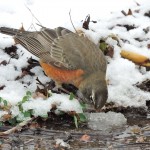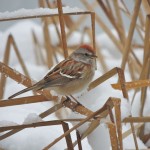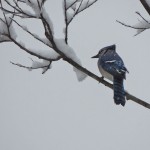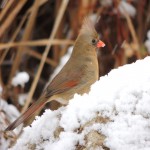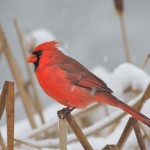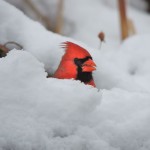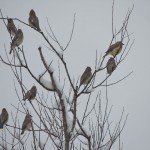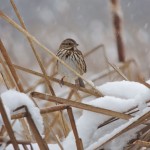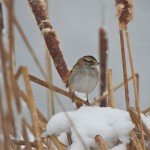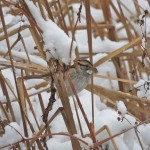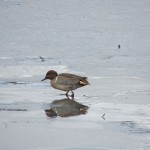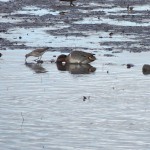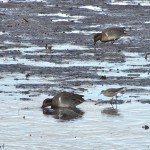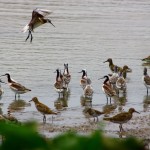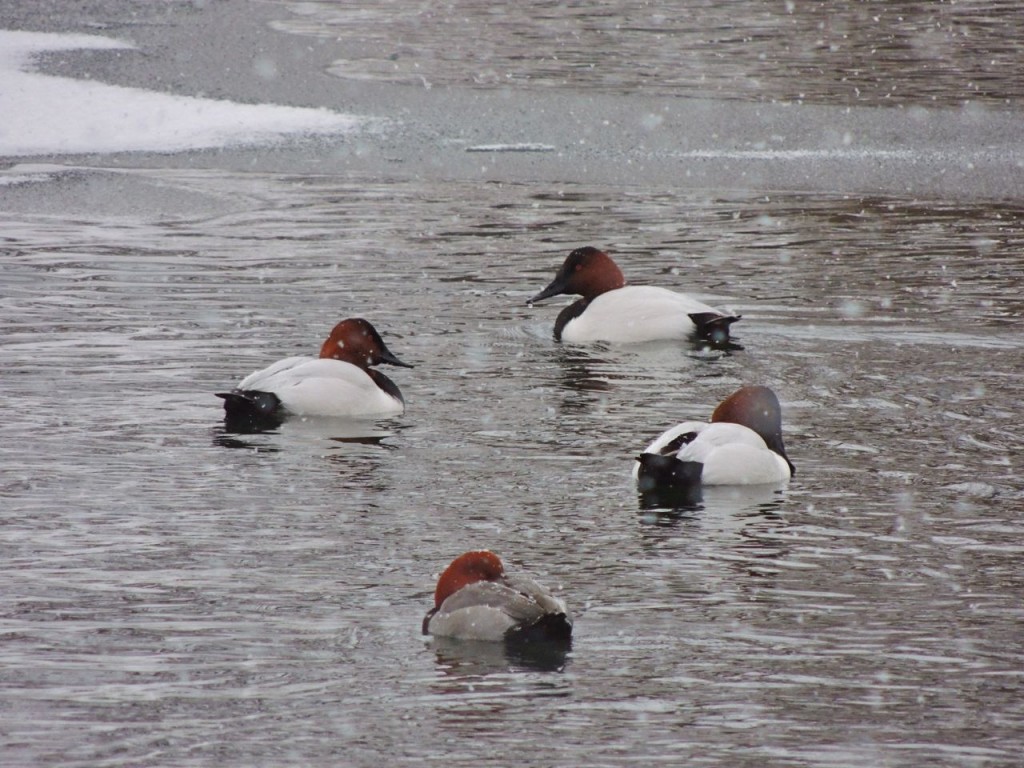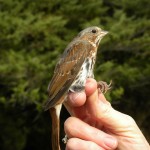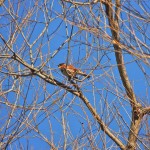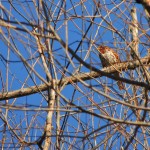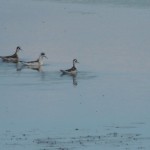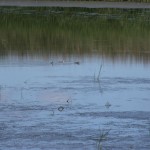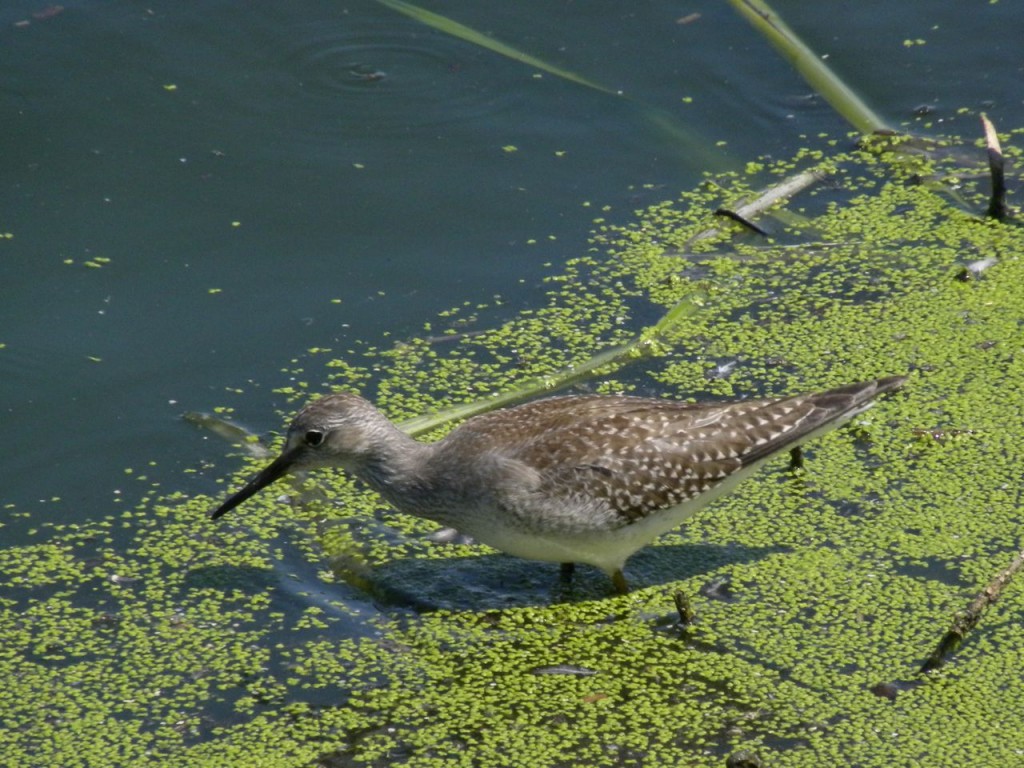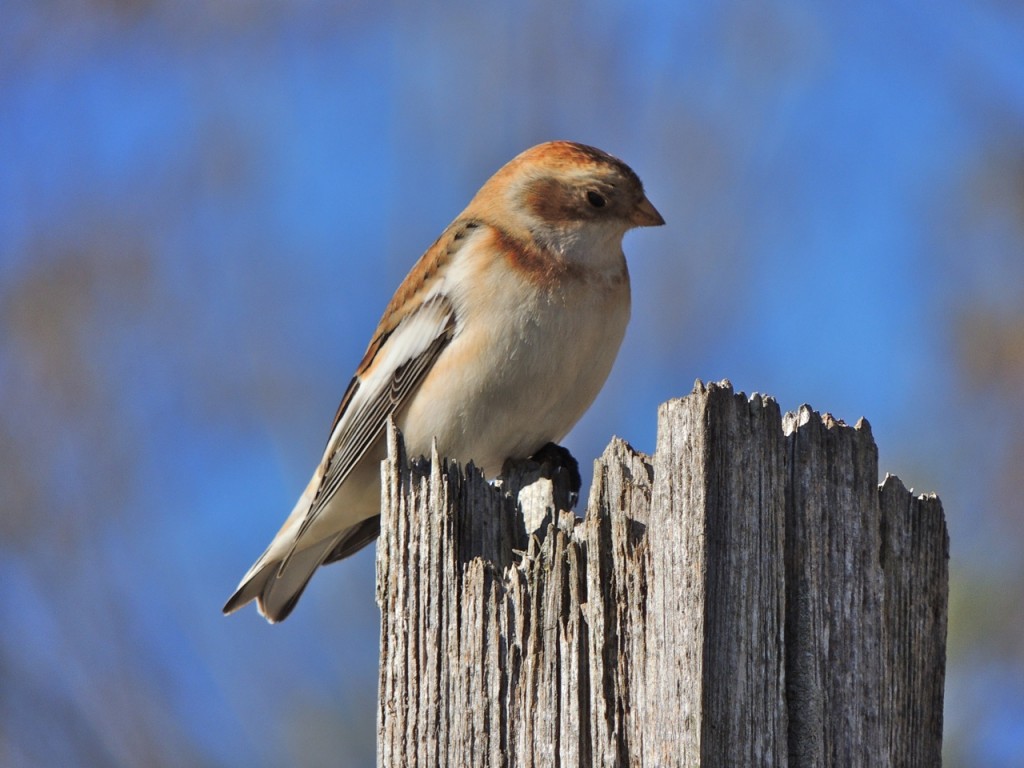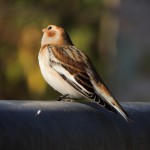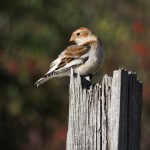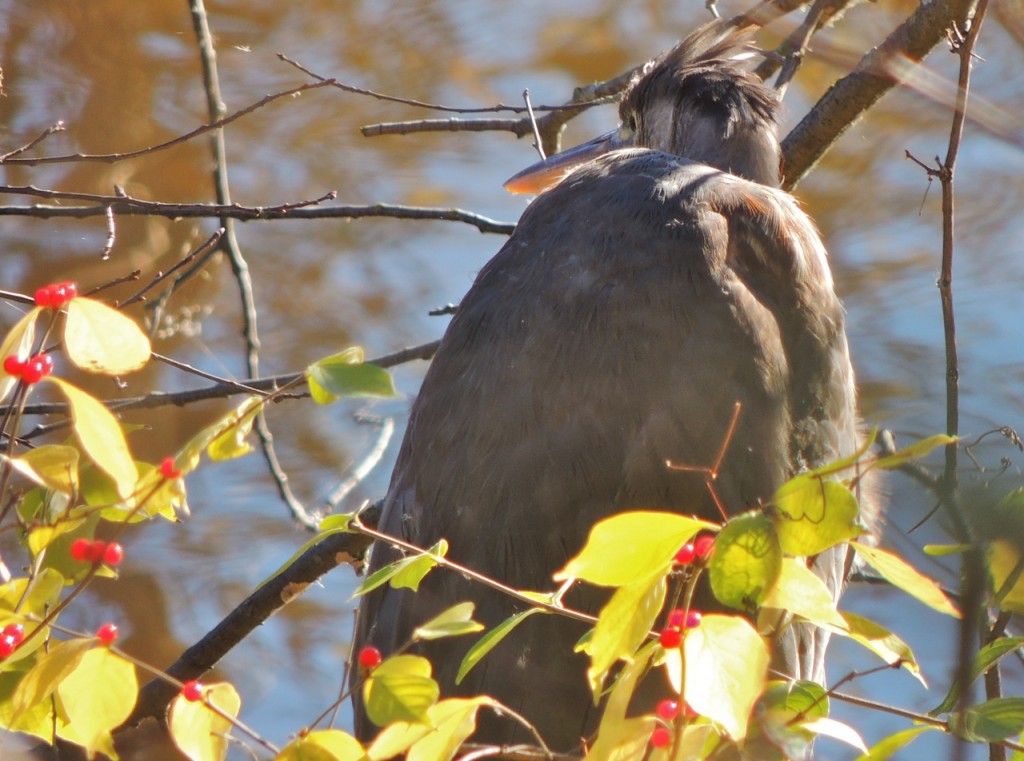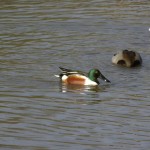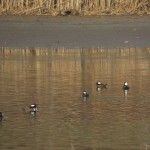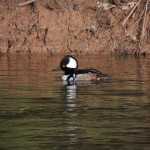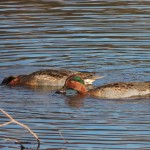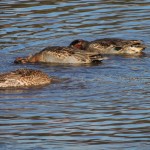17 November 2014. Burlington ON. If the first snow of winter should occur overnight it can be a useful aid in getting a determinedly sleeping, school-aged boy awake and out of bed. “Hey, Graham! There’s snow outside!” And Bingo, he’s up! It usually worked once a year, sometimes twice.
Our children are long past that stage now but we still get first of the winter snowfalls; it came last night and continued all morning. I had early errands to do but stopped at a favourite spot to see how snow was affecting the birds.
Well, firstly, this was a day to be a photographer, the quiet wet snow had outlined everything to Christmas Card perfection. Secondly, a coating of snow makes life tough for birds; it’s easy to forget that, and at this time with many late migrants still around, their distress was obvious. The snow had driven them to search for food in places which previously they probably would have avoided. I was quite surprised by the number of sparrows, in particular, seen hanging around bare roadsides looking for food. Snow and hungry birds made for some great, if slightly clichéd, shots but the still-falling snow was wet and I had to be careful not to soak my camera. That same caution seemed to have kept the often-encountered opportunist photographers at home; I had the place to myself. Here in a gallery visible only on the website, not if you’re reading this as an email, are a few of today’s shots of adorable, if hungry, birds.
It was while dodging and stepping carefully around puddles of slush, that I noticed the arrival of a group of what I took to be sparrows, land some distance away. I’d left my binoculars in the car (water on lens avoidance again) so wasn’t sure what I was seeing. So I took a couple of long shots for later scrutiny and promptly forgot about them, they soon flew away.
Later as I was reeling through the morning’s cutesy images, I came across those two quick-shots and almost exclaimed out loud. What are these? Oddly my first thought was Redwings, not Red-winged Blackbirds, but Redwings, a pretty little winter thrush of north eastern Europe. Well, clearly it wasn’t that, and it wasn’t until I got home that I was able to take a better look to confirm my second thought, American Pipits. Here they are.
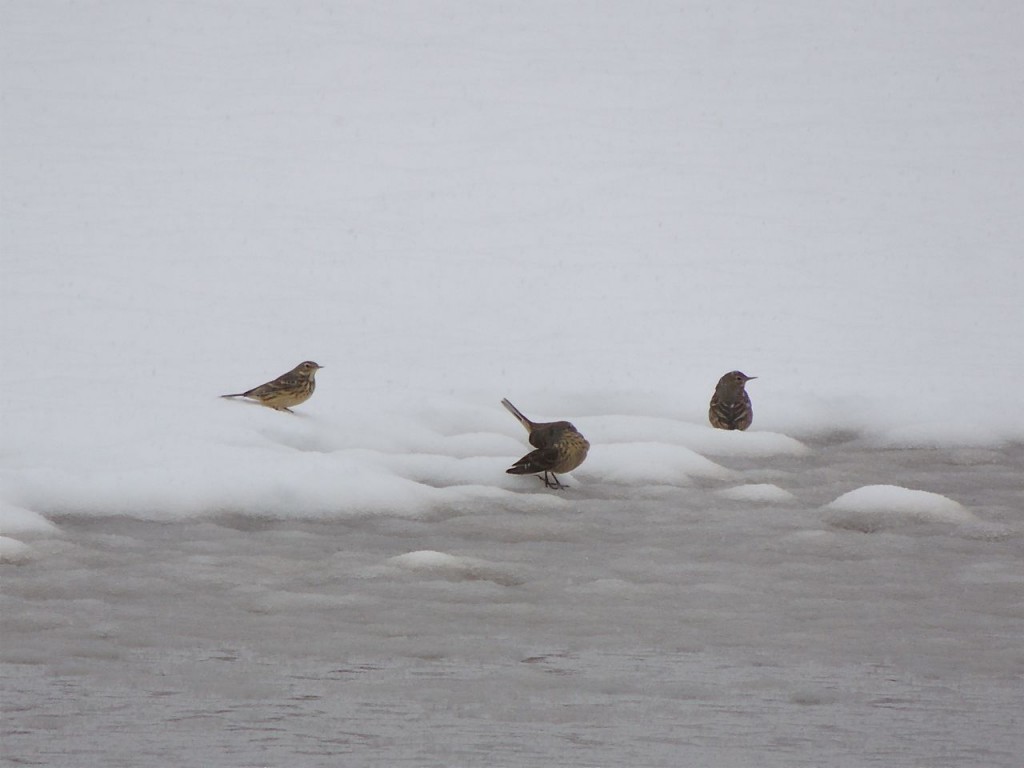
American Pipits aren’t particularly rare, but being birds of open fields and shorelines, they just seem to slip by under the radar. They are closely related to the Old World wagtails and share much of their rather effervescent charm. American Pipits winter well south of the Mason Dixon Line in the U.S.A, and breed in our far north far beyond the tree line; so for us they’re transients passing through and this is the right time of year to see them. While not especially noteworthy to those who collect rarities, I was pleased to see them, my Birds of the Day.
